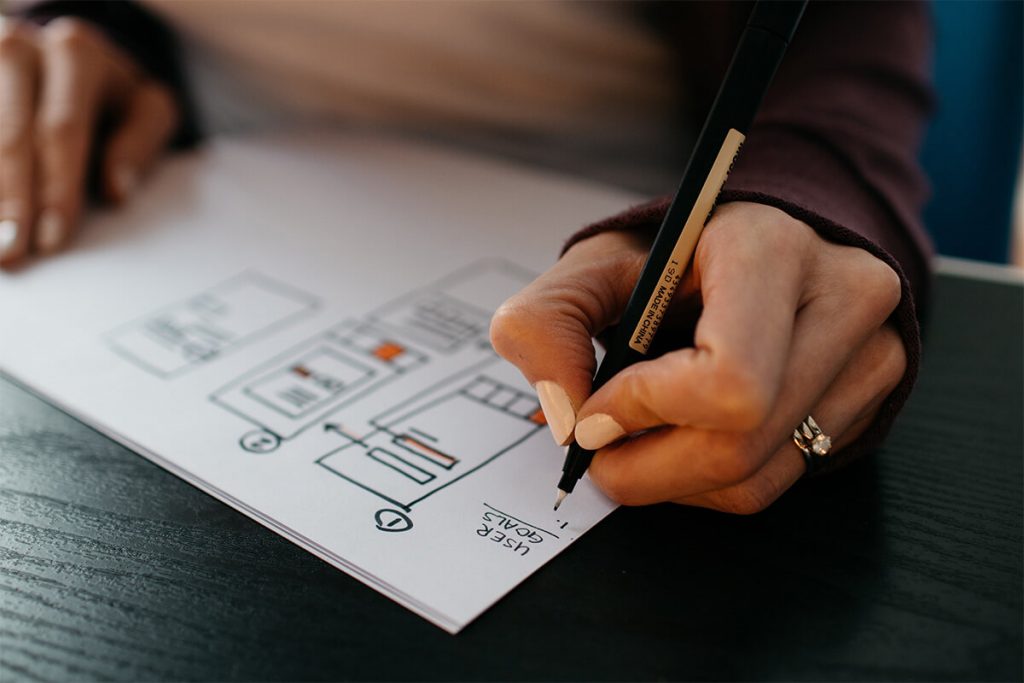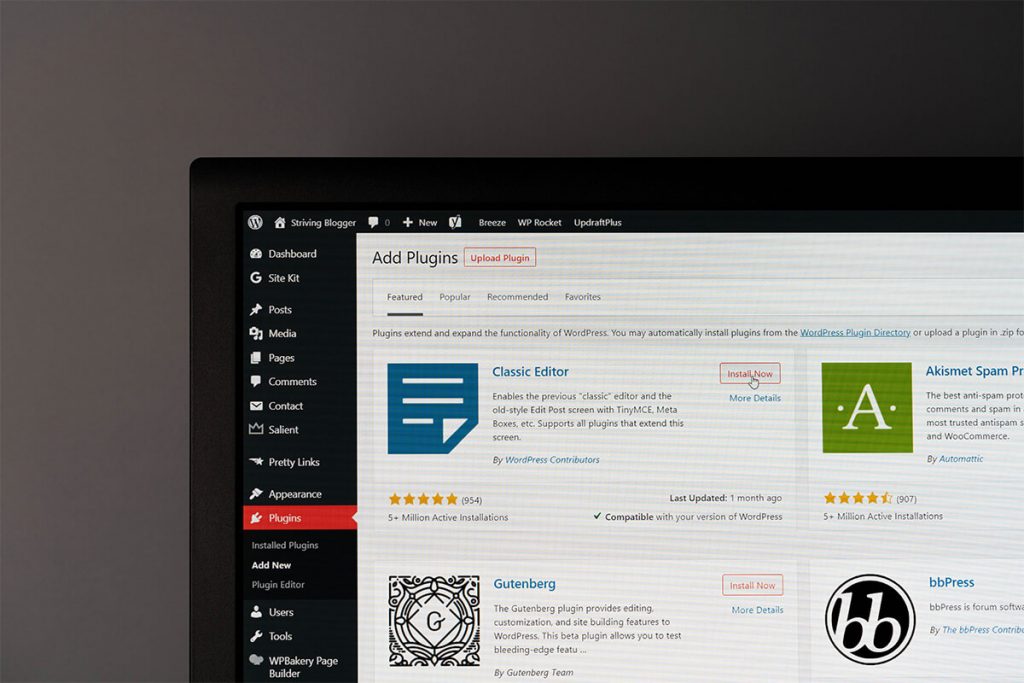
The Custom Website Design Process
In today’s digital age, having a website is no longer an option; it is a requirement for organizations hoping to succeed online. With so many businesses competing for attention on the internet, it’s critical to develop a website that stands out and offers users a distinctive user experience.
However, not all websites are made alike, and creating a truly effective online presence requires more than just throwing together some text and photos. A pre-made template or theme may appear to be a quick and easy solution, but it frequently comes with constraints that might impede the functionality, scalability, and overall effectiveness of the website.
This is where the custom website design process comes into play, as it is a technique of developing a website that is personalized to the exact demands of your business, brand, and audience. Working with a professional web designer allows you to create a totally unique website that is optimized for your business goals.
The custom website design process begins with an initial consultation in which the web designer learns about your company, brand, and target audience. This step is critical in determining your company’s needs and goals, as well as identifying any issues or pain points that the website should solve.
The web designer will then work on the style and layout of the website, taking into account your brand identity, messaging, and any other design preferences you may have. This process may include the creation of wireframes or prototypes of the website, which can aid in visualizing the final product and ensuring that it fulfills your expectations.
Once the design and layout are complete, the web designer will proceed to the development stage, which entails developing the website and incorporating any essential features and functionalities. This process necessitates technical knowledge and attention to precision, as even minor coding errors can have an impact on the website’s performance and user experience.
The final step is to launch and make the website live after it has been constructed and tested for functionality. This entails uploading the website files to a web server as well as configuring the domain name and hosting settings.
Communication between the web designer and the customer is essential throughout the custom website design process to ensure that the website fulfills the client’s business demands and goals. The web designer may also offer continuous maintenance and assistance to ensure that the website is up-to-date and optimized for search engines and user experience.
Step 1: Consultation
An initial consultation is usually the first step in the custom website design process. During this step, the web designer will meet with the client to discuss their company, website goals, and target audience. This is a critical step since it establishes the tone for the entire project and ensures that the designer understands what the client is looking for.
The designer may ask a range of questions during the consultation to have a better knowledge of the client’s needs. They may ask you the following questions:
- What is the primary purpose of your website?
- Who is your target audience?
- What are your goals for the website?
- What features do you want your website to have?
- What is your budget for the project?
By answering these questions, the designer can begin to develop a website plan that will satisfy the client’s objectives and expectations.
Step 2: Planning and Strategy
After the session, the designer will start working on the website plan. Creating a site map, wireframes, and a content strategy are all part of this process. A site map is a visual depiction of the structure of a website, whereas wireframes are rudimentary sketches of the layout and design of a website.
The content strategy is an essential aspect of the planning process since it ensures that the information on the website is targeted to the client’s intended audience. This could include creating a content calendar, defining essential messaging, and planning how the material will be presented on the website.

Step 3: Design
The designer will proceed to the design step once the planning and strategy phases are completed. The designer will produce mockups of the website’s design, including the layout, typography, color scheme, and imagery, during this stage. This stage’s purpose is to produce a visual picture of how the website will look.
Typically, the designer would provide many design ideas to the customer, who will then provide input and request adjustments as needed. It is vital to note that before the final design is approved, the design phase may go through numerous rounds of adjustments.
Step 4: Development
The designer will proceed to the development step once the design has been finalized. This is where the website is created. The accepted design will be used by the designer to construct the layout and functionality of the website, including any interactive features such as forms or e-commerce functionality.
The designer may also conduct user testing at this stage to ensure that the website is simple to access and use. This may entail testing the website on various devices and browsers to check that it is responsive and works properly.

Step 5: Content Creation and Optimization
It is now time to populate the website with content. This could include creating new content, optimizing existing information for search engines, and/or including multimedia elements like photographs or videos.
During this stage, it is critical to verify that the website’s content is search engine optimized. This entails inserting keywords into the website’s content as well as ensuring that the structure and coding of the website are optimized for search engine algorithms.
Step 6: Quality Assurance and Testing
Before launching the website, it is critical to check that it functions well and fits the needs of the client. This is where quality control and testing come into play. The website is carefully tested during this stage to verify that it is free of mistakes and defects. This may include testing the website on various devices and browsers, as well as functional testing to ensure that all features function properly.
It is vital to note that quality assurance and testing may entail several rounds of testing and changes to guarantee that the website functions properly.
Step 7: Launch
It is time to launch the website after it has been thoroughly tested and found to be functional. This entails transferring the website to the client’s web server and making it available on the internet.
The designer may also provide training to the client on how to use and administer the website throughout the launch phase. This could include instruction on how to update content, administer e-commerce capabilities, and perform other website administration activities.
Step 8: Maintenance and Support
The custom website design process does not end with the website’s debut. In reality, it is critical to provide ongoing maintenance and assistance to guarantee that the website remains current and functional.
This may include providing software and plugin updates, monitoring the website’s performance and security, and providing technical help to the client as needed.

The process of creating a custom website is complex and multi-step, involving careful planning, strategy, design, development, content production and optimization, quality assurance and testing, launch, and continuing maintenance and support.
Web designers may construct distinctive and effective websites that fulfill the individual demands of their clients by following these steps. Whether you are a little business or a huge corporation, custom website design may assist you in developing an online presence that is personalized to your company’s objectives and goals.
So, if you want to build a new website or remodel an old one, consider hiring a web designer that can walk you through the custom website design process and produce a website that will help your business prosper online.
Benefits of Custom Website Design
After we’ve gone over the custom website design process, let’s look at some of the advantages of going with a custom-designed website over a pre-made template or theme. Businesses can create a website using pre-made templates or themes, or they can commission a custom website design. While templates and themes may appear to be a cost-effective and time-saving solution, they frequently have design, functionality, and scalability constraints.
A custom website design process, on the other hand, enables for a completely unique website that is suited to your brand and business demands. This not only distinguishes your website from competitors, but also enables customizable functionality, scalability, and search engine optimization (SEO).
Furthermore, because the style and functionality are adjusted to match their individual demands, bespoke website design can deliver a better user experience for visitors. This can eventually lead to increased conversions and sales for your company.
Custom website design promotes greater brand consistency across all online channels, resulting in a more consistent brand experience for visitors and customers.
Overall, while custom website design may necessitate more time and money up front, it can bring long-term benefits and returns on investment for organizations seeking to develop a strong online presence.
- Unique Design: One of the most significant benefits of custom website design is the ability to create a completely unique design that is suited to your brand and business demands. This can help your website stand out from the crowd and leave an indelible impression on visitors.
- Tailored Functionality: Custom website design also provides for personalized functionality to fit your company’s specific needs. This means that the website can be built with features and functions tailored to your industry or target audience.
- Scalability: Your website may need to change and extend as your business develops and advances. Scalability is enabled through custom website design, which means that the website may be readily changed and enlarged as needed without compromising the overall look or functioning.
- Search Engine Optimization (SEO): Custom website design can also be optimized for search engines, which can boost your website’s visibility and ranking in search results. This can increase traffic to your website, resulting in more conversions and purchases.
- Better User Experience: A custom-designed website can also provide visitors with a better user experience. You can create a website that is easy to navigate, engaging, and instructive by adapting the design and functionality to match the specific demands of your target audience.
- Brand Consistency: Finally, unique website design ensures that your brand is consistent across all online channels. You can create a seamless brand experience for visitors across all touchpoints by developing a website that is consistent with your brand identity and messaging.
In Closing
In the current digital era, it is crucial for companies of all kinds to have a strong online presence. A professionally designed website may make you stand out from the crowd, increase traffic and conversions, and foster brand recognition and adherence.
You may build a website that is genuinely one-of-a-kind, personalized to your particular business requirements, and enhanced for search engines and user experience by choosing a custom website design. Therefore, whether you’re wanting to build a new website or redesign an old one, think about working with a web designer who can lead you through the custom website design process and assist you in realizing your online objectives.





